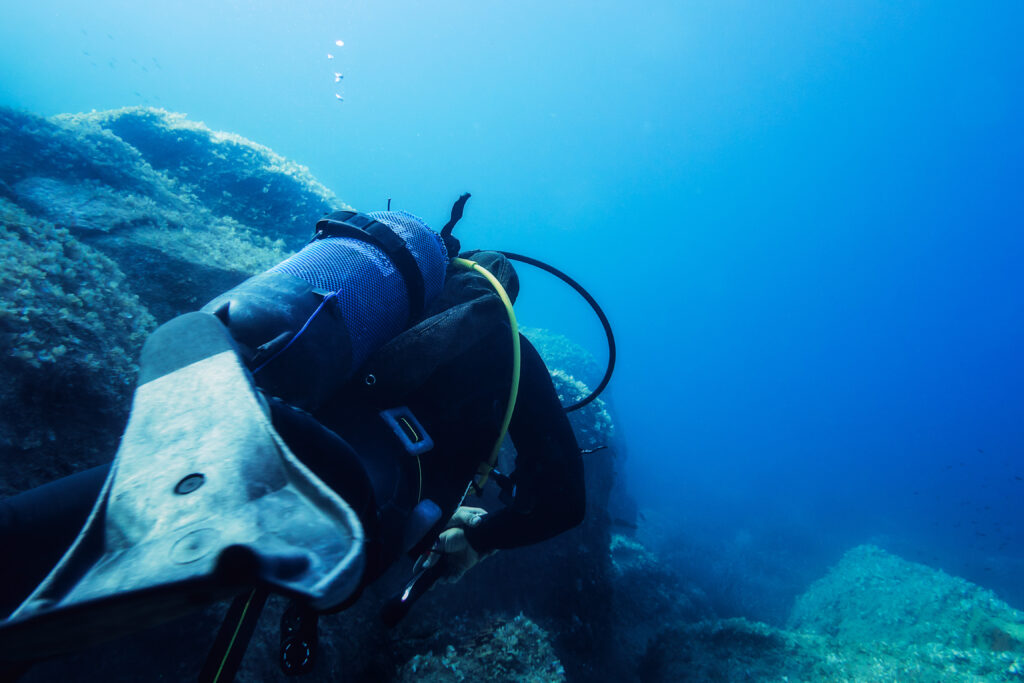What is Residual Nitrogen Time?

The world of scuba diving is one that demands attention to detail, respect for the natural world, and an understanding of physics and physiology principles. One crucial concept in this respect is that of “Residual Nitrogen Time” (RNT), an integral part of dive planning that influences dive safety, duration, and depth. This concept revolves around the body’s nitrogen absorption and release processes, directly tied to decompression sickness prevention.
What is Wet Filling?

Wet filling is a process used in scuba diving to fill diving cylinders with gas while they are submerged in water. This method is important for ensuring safety and efficiency in scuba diving. By understanding the intricacies of wet filling, divers can better appreciate its significance and the technical considerations involved.
What is Actual Bottom Time (ABT)?

actual bottom time refers to the total amount of time that elapses from the moment a diver begins their descent until they initiate their ascent. During this period, the diver is submerged underwater, exploring marine life, inspecting underwater structures, or conducting scientific research. The calculation of actual bottom time is a critical aspect of dive planning and dive safety, as it has implications for decompression requirements, air supply management, and physiological considerations.
What is Decompression Illness?

Decompression illness (DI) is a significant condition that affects scuba divers and can have serious health implications if not properly managed. It encompasses a range of ailments resulting from changes in pressure, particularly during ascent after a dive. Understanding decompression illness is crucial for divers, as it helps in preventing, recognizing, and treating this potentially life-threatening condition. This article will cover the physiology, types, causes, risk factors, prevention strategies, diagnosis, treatment, and implications of decompression illness.
What is a Wet Pot?

A Wet Pot is a specialized water-filled hyperbaric chamber used predominantly in experimental work, training, and as a transfer chamber in saturation diving systems. These chambers play a crucial role in the field of hyperbaric operations and scuba diving by providing a controlled environment for divers and researchers. In training scenarios, Wet Pots simulate underwater conditions, allowing divers to practice and prepare for real-life situations. In experimental contexts, they enable scientists to conduct research on the effects of pressure and gases on the human body and various materials. Furthermore, Wet Pots serve as transfer chambers in saturation systems, where they facilitate the safe removal and handling of wet equipment after deep dives. Their versatility and utility make Wet Pots an essential component of modern diving and hyperbaric practices.
What is a Jon Line?

A jon line is a specialized piece of equipment used by scuba divers to maintain a stable position underwater, particularly during decompression stops in strong currents. It is essentially a length of cord or webbing, typically around 1.5 to 2 meters (4.9 to 6.6 feet) long, equipped with a clip or carabiner at one end and sometimes a handle or loop at the other. The term “jon line” is derived from its creator, Jon Hulburt, a diver who saw the need for such a tool to aid divers in holding their position without expending excessive energy. In technical and recreational diving, the jon line has become a crucial tool for ensuring safety and reducing physical exertion during prolonged stops.
What is Neoprene?

Neoprene, a type of synthetic rubber, has become integral to many industries due to its unique properties, especially in scuba diving gear. Originally developed by DuPont in the 1930s, neoprene’s chemical stability and flexibility made it an ideal material for a wide range of applications. In scuba diving, neoprene is predominantly used in the manufacture of wetsuits, providing thermal insulation, buoyancy, and protection against the underwater environment. Its adoption revolutionized diving by significantly enhancing diver comfort and safety. This article delves into the historical development, properties, manufacturing process, applications in scuba diving, maintenance and care, and environmental impact of neoprene.
What is a Delayed Surface Marker Buoy?

A delayed surface marker buoy (DSMB) is an essential piece of equipment used by scuba divers to enhance safety and communication during their underwater activities. Unlike a standard surface marker buoy (SMB), which is deployed at the beginning of a dive, a DSMB is typically deployed from underwater, often towards the end of the dive. This allows divers to mark their position and signal their ascent to the surface, providing visibility to boats and other watercraft in the vicinity. The DSMB plays a critical role in preventing accidents, ensuring divers are easily located, and facilitating safe and efficient dive operations.
What is Recreational Scuba Diving?

Recreational scuba diving is a popular underwater activity enjoyed by millions of people around the world. It allows individuals to experience the underwater environment firsthand, encountering marine life and underwater landscapes that are typically inaccessible. Unlike commercial or military diving, which focuses on tasks such as underwater construction or defense, recreational scuba diving is primarily for enjoyment and adventure. It involves using a self-contained underwater breathing apparatus (scuba) to breathe underwater, enabling divers to spend extended periods submerged. This activity has grown significantly in popularity due to its appeal to adventurers and nature enthusiasts alike.
What is Trimix?

Trimix is a specialized breathing gas mixture used by technical divers to safely reach greater depths than what is achievable with air or nitrox. Comprising oxygen, nitrogen, and helium, trimix helps mitigate the risks associated with deep diving, such as nitrogen narcosis and oxygen toxicity. By reducing the proportion of nitrogen and oxygen in the breathing mix, trimix allows divers to explore depths well beyond recreational limits while maintaining a safer physiological profile.
